- Home
- Deborah Harkness
The World of All Souls Page 45
The World of All Souls Read online
Page 45
Elizabethan Herbal Medicines
In sixteenth-century England, a diverse group of people practiced the healing arts. Since the average person could not afford the services of a physician, wives tended to the medical needs of their families from their own personal recipes and stock of herbs and minerals. Some of these remedies required distillation, and a still was standard equipment in many kitchens (as we know, Marthe kept one in the Sept-Tours kitchen in France). If the household remedies didn’t provide relief, the family might ask help from a local healer, who was often also a midwife, or from the local apothecary. Only if the family was wealthy would they call on the services of a physician.
As a sixteenth-century housewife, Diana concocted the following headache remedy on instructions from the cook at the Old Lodge:
“A Caudle for pains in the head
Set your water to boil. Beat two egge yolkes. Add white wine and beat some more. When the water boils, set it to cool, then add the wine and egge. Stirre it as it boils again, adding saffron and honey.”
We doubt that this remedy was very effective, but others might have been more successful. Sir Hugh Plat, a wealthy lawyer in London who suffered from gout (a painful form of arthritis, especially affecting the feet), used a therapy recommended to him by his children’s wet nurse:
“A bath of red sage, pennyroyal, and as much salt as will make the water of the strength of brine is good after the pain of the gout is gone, to strengthen the foot it must be used in the morning and then the patient must walk upon it by little & little at once. This of Nurse Chetle.”*
Even today a soak in Epsom salts is recommended for gout pain and sage compresses for relief of discomfort from sprains and strains.
Unfortunately, in addition to herbs, Elizabethan healers sometimes incorporated metals such as gold, sulfur, mercury, tin, antimony, arsenic, and lead into their medicines. They also used bezoar stones—balls of inorganic material that form in the stomach of animals and do not pass into the intestine—which were believed to be an antidote to any poison. When Diana feigned illness in Prague, Rudolf II sent his royal physician with remedies: “terra sigillata, the clay with marvelous healing properties; bezoar stones harvested from the gallbladders of goats to ward off poison; a cup made of unicorn horn with one of the emperor’s family recipes for an electuary. The latter involved roasting an egg with saffron before beating it into a powder with mustard seed, angelica, juniper berries, camphor, and several other mysterious substances, then turning it into a paste with treacle and lemon syrup.” Given that a bezoar stone is basically a glorified hair ball, Diana’s reluctance is understandable—though one modern scientist has demonstrated that bezoars are capable of absorbing arsenic from solution.*
Needless to say, we do not recommend trying any of these remedies at home! It’s important to remember, though, that through their everyday experimentation the Elizabethan practitioners of medicine were laying the foundation for future scientific work.
See also: LIFESTYLES: All Souls Herbal Teas
Gonçalves Manuscript 4890
or English commonplace book (anonymous, late sixteenth century)
When Matthew gave Diana a blank, slim volume to practice her letters in in the sixteenth-century Old Lodge, she embraced the opportunity to create her own commonplace book. She was also wary about where the book would end up. Getting used to writing with a quill was another matter, and the entries appeared endearingly shaky. Commonplace books could be filled with all sorts of notes and everyday reminders, prayers, or quotes that were personal to the writer. These left intriguing trails for later historians to study about the daily life of a person in that period. Diana made notes on an array of subjects, from herbs and medicinals to sayings and star signs, just as other sixteenth-century contemporaries might have done.
All Souls Activities
Archery
Archery is a central thread in the All Souls trilogy. Diana Bishop is spiritually linked to her namesake, the goddess of the hunt, who is often depicted carrying bow and arrows. This is the weapon with which Diana dispenses justice. When the vampire Juliette attacked Matthew in the woods near the Bishop house, Diana instinctively equipped herself with her native weapon. “My hands felt heavy, and I knew without looking that they held a bow and arrow.” After a second of hesitation, Diana shot a ball of witchfire into Juliette, continuing until Juliette was reduced to a heap of coal. Later she confessed to Emily, “The maiden’s been in my dreams. Sometimes it’s as though I’m inside her, looking out as she rides or hunts.”
Diana’s use of the bow and arrow was instinctive, but she had little understanding of her powers, which is one of the reasons she and Matthew journeyed back in time. While they were at Sept-Tours in 1590, Matthew outfitted her with a state-of-the-art bow made of horn, wood, and leather bowstring. When Diana protested at Matthew’s seriousness about the lesson, he said, “There’s nothing lighthearted about survival.” Diana knows about magic, but centuries as a soldier have made Matthew an expert in the use of a longbow. He fought at the Battle of Crécy in 1346, in which an army of English and allied soldiers armed with longbows famously devastated the French despite having far fewer men.
The harder she tried, however, the worse Diana shot. Matthew sensed that she needed to rely on her instinct instead, and he instructed her to close her eyes before shooting. When she relaxed, she could see the fire that beat the arrowhead into shape at the forge and feel the air that must carry it. This time she hit her target.
On Diana’s wedding day, Philippe gave her an unusually shaped golden arrowhead, its edges softened with age. She had to leave it behind when she and Matthew departed the sixteenth century, but Alain returned it to her when she arrived back in the present. She took to wearing the arrowhead around her neck on a chain. At the Old Lodge, the goddess offered her a silver arrow. When Diana refused to accept it, the goddess shot it into her, burying Philippe’s golden arrowhead deep into her breast. Now the goddess’s justice was part of her. When it came time to kill Benjamin, she did not hesitate as she had with Juliette. Without a bow, Diana shot the arrow into Benjamin’s chest, cleaving him open and bursting his heart.
In the world of All Souls, the bow and arrow are the means of the goddess’s justice, and Diana is her agent.
Dancing
For the nobility of the sixteenth century, dancing was not just recreation but a necessary social art. Dancing displayed a person’s social skills, refinement, and suitability for marriage. Since the dances could be quite intricate, lessons were a necessity, and children often began their training by the age of six. The most favored dancing masters at this time were Italian, like Alfonso Pasetti in Rudolf II’s court. Dance manuals were also available. The French cleric Thoinot Arbeau (an anagram for “Jehan Tabourot”—at that time “i” and “j” were different shapes for the same letter) wrote Orchésographie, which covered not only dance steps but also the social reasons for dancing. “And there is more to it than this, for dancing is practiced to reveal whether lovers are in good health and sound of limb, after which they are permitted to kiss their mistresses in order that they may touch and savor one another, thus to ascertain if they are shapely or emit an unpleasant odor as of bad meat.”*
In this period there were two broad styles of dance: simple dances that usually included many participants dancing in circles or columns—such as the pavane, the bassa dance, or the almain—and complex dances that required instruction and much practice—such as the galliard, the coranto, or the canario. Diana and Matthew’s wedding dance was probably one of the simpler ones, because Diana had had only one dance lesson from a member of the orchestra. It might have been a bassa dance, or it could have been a pavane, a plain and solemn processional dance performed in long, gliding steps. The pavane still survives in the hesitation step used in the wedding procession. It is unlikely to have been a galliard, which requires complicated footwork as well as leaps and jumps. This was E
lizabeth I’s favorite, and she was known to perform it half a dozen times per day for exercise well into her fifties. Sometimes the male dancer would perform a special step called the tassel kick (salti del fiocco), in which he spins and kicks out to touch a tassel between his knee and waist.
Elizabeth I is said to have danced a rather risqué version of the galliard, called a volta, with the Earl of Leicester. This woodcut taken from an oil painting (hanging in Penshurst Place, England) was thought to depict them dancing it together.
At Rudolf’s court Diana participated in a different sort of dance. When Rudolf insisted that she be involved in the spring’s entertainment, Diana agreed to play the goddess of the moon while Matthew played Endymion, the young man she loves. In this story the moon goddess asks Zeus to preserve Endymion in sleep so that he can remain with her forever. The performance was more successful than either Diana or Matthew bargained for, because when she made her entrance as the moon goddess, Diana began to float above the floor. Luckily, Rudolf believed it to be simply a “wonderful effect.”
Falconry
Falconry refers to the hunting of game (especially wild birds) using a trained bird of prey. During the early Middle Ages in Europe, falconry was both a way of obtaining meat and a sport. As the practical consideration became less important, falconry evolved more into a pastime and a status symbol of the aristocracy. Like dancing, it was a means of social climbing; where you hunted (for example, on a royal preserve), your knowledge of proper terminology, and the type of bird you flew all helped indicate your status in society. Even though the Stag Moat was too small a hunting area for his eagle Augusta, Rudolf II insisted on introducing her to Diana, presumably because she symbolized his status as emperor. (Interestingly, in the 1200s the Holy Roman emperor and falconry expert Frederick II had scoffed at the idea that eagles were the best choice for hunting. He implied that such a choice suggested amateurishness.) Falconry could be considered the sixteenth-century equivalent of iPhones and fast cars.
During their stay in Prague, both Matthew and Diana participated in a hunt in Rudolf’s Stag Moat using falcons. In place of his eagle, the emperor flew a gyrfalcon—the largest falcon of all, used almost exclusively by kings and nobles. After the nobles squabbled over the remaining birds, Matthew took the only one left, a merlin. The Book of Saint Albans, a gentleman’s hunting manual published in 1486, had declared the merlin more suitable for use by a lady. It is physically far smaller than a gyrfalcon, and Rudolf sneered at Matthew for his choice. But the merlin, Šárka, was a worthy representative of her species and outmaneuvered the emperor’s gyrfalcon to bring down her prey.
Swordplay
Muskets were used in military combat in the late sixteenth century, but they were ponderous to reload, not terribly accurate, and, because of their nasty recoil, as likely to injure the shooter as their intended target. Few ordinary people, then, had any practical experience with guns. They were more likely to use daggers, swords, and rapiers. Huge quantities of such arms were produced and used in sixteenth-century Europe, and most men had at least one or two. Within hours of arriving in sixteenth-century England, Matthew buckled a dagger at his waist, after the custom of the era. Most of the School of Night carried blades, as did Gallowglass and Davy, Pierre, and Philippe. Even Stephen Proctor carried a short knife when he timewalked to the past. Like the rest of the men in Elizabeth’s England, they carried these weapons in order to defend themselves and, if so inclined, to attack others. This was true for urban as well as rural communities, in times of peace as well as war. Men would have removed their personal arms only when they were sleeping or in church, or perhaps in someone’s home. But even then most men kept their weapons close at hand. This meant that disagreements could readily escalate from insults and fisticuffs to bloody attacks and death. This could be what happened to Kit Marlowe—that he got between two combatants and was stabbed in the head and died. However, it’s unlikely we will ever know what really occurred.
In addition to daggers, many also owned swords. Poor farmers or laborers could have had a sword handed down in their family, while men of means might have had an arsenal of newer weapons. There were two kinds of swords in use in England in 1590. One was the older, traditional, double-bladed longsword, often with a blunted end. It was so long and heavy that it required two hands to swing it (though a slightly smaller version called the bastard, or one-handed sword, was also available for the very strongest men, like Matthew). These swords were of such length and heft that they were entirely impractical to carry around in ordinary life and so were intended for use in open combat. They worked by smashing opponents, knocking them down, and were capable of slicing off an arm or a leg (or a head). The second type of sword, which was becoming increasingly common in sixteenth-century Europe, was a rapier, or walking sword. As their name implies, walking swords were designed to be more portable than older swords and so were lighter and shorter. They had a narrow blade and a pointed tip, designed for thrusting and stabbing. Because they could easily be wielded with one hand, this left the other hand free to use a dagger to block an opponent’s sword.
For the fight in the hayloft at Sept-Tours, Matthew used both a one-handed sword and his dagger, in the European style of the time. His father, by contrast, used a shorter, wider blade in the style of a Greek xiphos “leaf sword,” or similar one-handed broadsword, in conjunction with a shield—again, in the Greek fighting manner. Philippe also demonstrated his skill in the use of his dagger, even against the de Clermont family’s assassin, Matthew.
The key to swordfighting in the sixteenth century was to knock your opponent off balance. This was mostly a test of endurance, some skill, and brute force. Young men would have sparred with older ones, and wealthy men might even have studied with fencing masters from the Continent or practiced their skills in tiltyards like the one at Greenwich Palace. Wherever the fighting occurred, sparring with swords was violent and bloody. It left many with broken bones and lethal wounds. It was rare for anyone, even a vampire, to emerge from one of these fights unscathed.
Chess
The ancient game of chess is another form of combat that most vampires enjoy. The de Clermonts have been inspired by the intricate, complex tactics of the game as they have negotiated their positions of power through the centuries. Its symbolism is woven throughout the All Souls trilogy.
Chess originated in India as a game of military strategy that pitted mock troops against each other. With its challenging mix of short-term maneuvering and long-term strategic planning, the mental sport of chess gained broad appeal and spread throughout much of the Eastern and Western worlds. It was well established in Western Europe by the medieval period and was played frequently by the nobility in Tudor England, including Queen Elizabeth I. There are many allusions to chess in the theater of the time, from Shakespeare’s plays to A Game at Chess by Thomas Middleton, which was staged in 1624 by the King’s Men at the Globe Theatre. It was a political satire of the tension between Spain and England.
The rules of chess have evolved from the Middle Ages and its Eastern origins. Historians believe that it was around the fifteenth century in southern Europe that the outline of chess as we know it today emerged. Most notably, new rules at the time changed the role of the queen; from being one of the weakest pieces, she turned into the strongest and could now move the most freely, becoming the greatest threat to her opponent. Over many hours of play and study, the world’s best chess players memorize thousands and even tens of thousands of combinations of moves, as well as the opportunities and pitfalls of every possible combination. This is why daemons, with their canny intelligence and seemingly limitless energy, and vampires, with their long lives, make particularly excellent chess players.
Each square on the gameboard is identified by its unique coordinates, which are a combination of the letters A to H running along one edge of the gameboard, and the numbers 1 to 8 running along the perpendicular edge. Modern chess has developed a
shorthand algebraic notation to describe the positions of game pieces on the board, which is the abbreviation for the game piece (unless it’s a pawn, which has no abbreviation) plus the particular square on the chessboard. So the notation “Qg5” means the queen has moved to the G5 square, and “D4” means a pawn is located at the square D4. If a piece is captured, the letter x is inserted before the captured square, so RxC2 means the rook has captured a game piece at the square C2.
The Queen’s Gambit is one of the many classic opening moves in chess. In this tactic white, which always moves first, opens the game by placing a white pawn at C4, which is a vulnerable position within easy capture by black at the center of the board. This compels black to make a choice: either move to capture white’s pawn (DxC4), which will leave the black queen more exposed, or decline the gambit and spare the pawn at C4, instead playing a piece farther away from the center. By declining the gambit, black keeps its center pawns in place, guarding the black queen and preventing her from fighting alongside the other black pieces.
Like most vampires, Matthew enjoys playing chess. He has spent many contented evenings locked in mental battle over a chessboard with his old friend Hamish Osborne. Matthew also has a reputation among family and friends as a conservative player. Before he met Diana, he never opened his games with the Queen’s Gambit and would decline it when his opponent played it, preferring always to protect his powerful queen. But when Benjamin broadcast a live video feed of a bound and tortured Matthew to taunt the de Clermonts and the Knights of Lazarus, the captive Matthew used his finger to tap out a hidden message in Morse code: “D-x-C-4.” Hamish recognized this chess notation and knew what it meant: Matthew had accepted the Queen’s Gambit. He signaled that his queen, Diana, must no longer remain out of the fray, protected by him and others. At long last it was time for Diana to use her vast powers and move onto the battlefield.

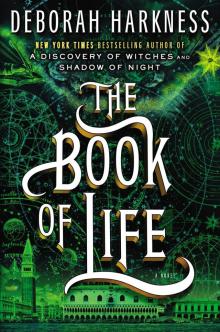 The Book of Life
The Book of Life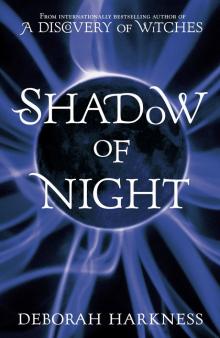 Shadow of Night
Shadow of Night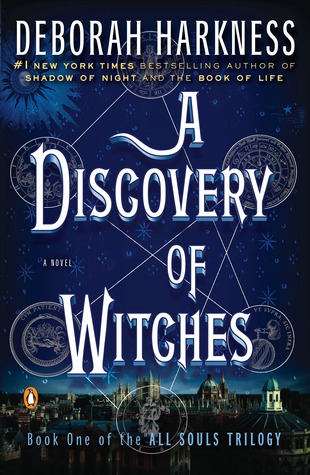 A Discovery of Witches
A Discovery of Witches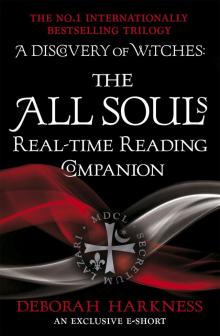 The All Souls Real-Time Reading Companion
The All Souls Real-Time Reading Companion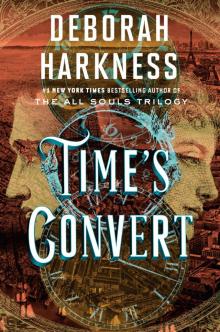 Time's Convert
Time's Convert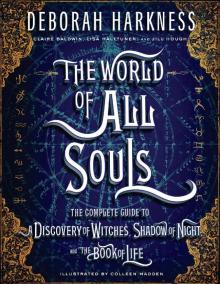 The World of All Souls
The World of All Souls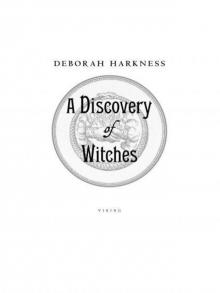 A Discovery of Witches: A Novel (All Souls Trilogy)
A Discovery of Witches: A Novel (All Souls Trilogy) Shadow of Night: A Novel
Shadow of Night: A Novel